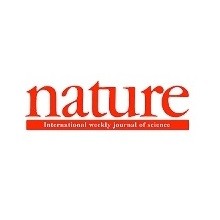
مشخصه سلول های بنیادی پرتوان
توصیف سلول های بنیادی پرتوان برای ثبت سلول های بنیادی ضروری است و امکان مقایسه ی بی طرف و عینی نتایج حاصل از تولید لاین های چندگانه را فراهم می آورد. بنابراین بسیار مهم است که پرتکل های خاص ، سریع و قابل اعتماد برای تشخیص نشانه های پرتوانی فراهم کنیم. چنین پروتکل هایی باید شامل ایمونوسیتوشیمی (2 روز طول می کشد)، شناسایی سه لایه زایا در بدن جنین های حاصل از in vitro توسط ایمونوسیتوشیمی (تشخیص ایمنی 3 روز طول می کشد) و تشخیص مارکرهای تمایز در تراتومهای تولید شده در in vivo توسط ایمونوهیستوشیمی (تشخیص مارکر تمایزی 4 روز طول می کشد) باشد. استاندارد سازی پروتکل های تشخیص ایمنی حداقل تغییرات به دلیل منبع، گونه های حیوانی، فلوروسنس درون زا و یا عدم توانایی جمع آوری مقادیر زیادی از سلول ها را تضمین می کند، در نتيجه نتایج هرچه سریعتر بدون کاهش کيفيت حاصل می شوند. این پروتکل شرحی از تمام روشهای تشخیص ایمنی لازم برای مشخص کردن رده های سلول بنیادی موش و انسان در شرایط مختلف را ارائه می دهد.
مقدمه
پس از اولین نسل از سلول های بنیادی جنینی (ESCs) و سلول های بنیادی پرتوان القا شده (iPSCs)، روش های کشت سلولی متعددی که بر کشت این سلول ها متمرکز شده اند، به طور کامل ارائه شده است. با این حال، پروتکل های توصیفی که از تشخیص ایمنی برای تست پرتوانی و توانایی تمایز این لاین های جدید تولید شده استفاده می کنند ،همیشه به طور کامل توصیف نشده است. اگر چه فیکساسیون و آنتی بادی های مورد استفاده معمولا توصیف می شوند، مشکلات فنی و نکات پیشنهادی اغلب حذف می شوند.
Characterization of pluripotent stem cells is required for the registration of stem cell lines and allows for an impartial and objective comparison of the results obtained when generating multiple lines. It is therefore crucial to establish specific, fast and reliable protocols to detect the hallmarks of pluripotency. Such protocols should include immunocytochemistry (takes 2 d), identification of the three germ layers in in vitro–derived embryoid bodies by immunocytochemistry (immunodetection takes 3 d) and detection of differentiation markers in in vivo–generated teratomas by immunohistochemistry (differentiation marker detection takes 4 d). Standardization of the immunodetection protocols used ensures minimum variations owing to the source, the animal species, the endogenous fluorescence or the inability to collect large amounts of cells, thereby yielding results as fast as possible without loss of quality. This protocol provides a description of all the immunodetection procedures necessary to characterize mouse and human stem cell lines in different circumstances.
INTRODUCTION
Since the first generation of embryonic stem cells (ESCs)1,2 and induced pluripotent stem cells (iPSCs)3,4, numerous cell culture techniques focusing on the culture of these cells have been presented in detail5,6. However, characterization protocols that use immunodetection to test the pluripotency and differentiation capacity of these newly generated lines have not always been described thoroughly. Although the fixation and antibodies used are usually described, technical pitfalls and suggested tips are frequently omitted.
مقدمه
آزمایشاتی برای تشخیص لاین ESC و iPSC
آنالیز DNA fingerprinting و HLA
مقایسه با سایر روش ها
طراحی آزمایش
مواد و روش ها
مواد
روش
رنگ آمیزی AP . زمان رنگ آمیزی 30 دقیقه
تشخیص پرتوانی . زمان بندی : 2 روز
عیب یابی
تشخیص تمایز در Ebs
عیب یابی
تشخیص افتراقی با EBs در یک slideFlask . زمان بندی: 3 روز
تشخیص تمایزی در تراتوما . زمان بندی : 4 روز
a)غوطه ور سازی در پارافین . زمان بندی 6 تا 8 روز
(B) تکثیر سلولی در تراتوما . زمان بندی: 6 تا 8 روز
(c) تشخیص مرگ سلول در برابر تکثیر در تراتوما . زمان بندی: 7 روز
عیب یابی
نتایج پیش بینی شده
INTRODUCTION
Tests to characterize ESC and iPSC lines
Comparison with other methods
Experimental design
MATERIALS
PROCEDURE
ANTICIPATED RESULTS
- ترجمه فارسی مقاله با فرمت ورد (word) با قابلیت ویرایش، بدون آرم سایت ای ترجمه
- ترجمه فارسی مقاله با فرمت pdf، بدون آرم سایت ای ترجمه
